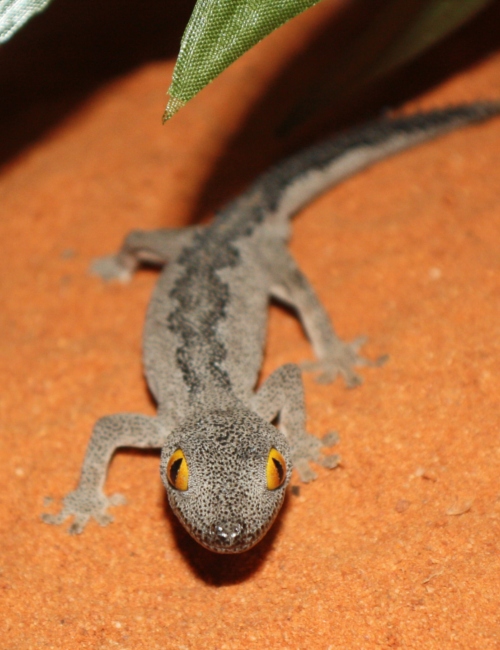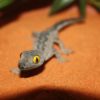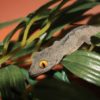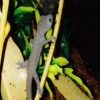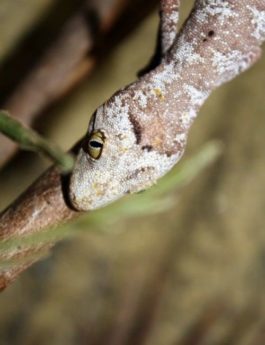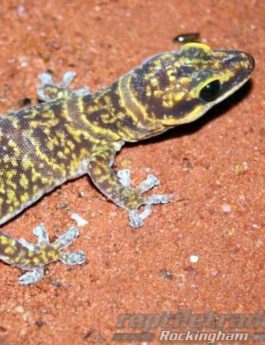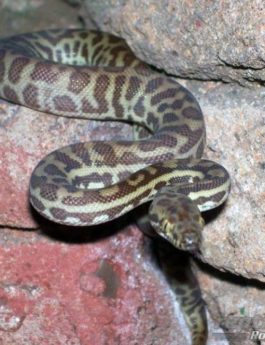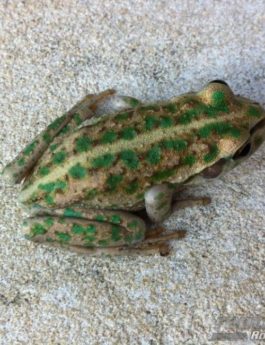Member of S. strophurus group. Two subspecies recognised. S. s. spinigerus (Gray, 1842) Bears 2 prominent rows of soft black dorsal spines which become larger on tail. Iris rimmed with yellow in south, white in coastal areas north of Kalbarri and marked with intricate geometric designs. Ground colour grey to greyish brown. Broad dark grey to black dorsal stripe (with straight to zigzagging edge) extends from head or nape to tail-tip. This is peppered with small white spots, each centred on a scale. Remainder of body and limbs peppered with black spots; 1 per scale. Ventral surfaces pale to dark grey with darker pigmentation beneath throat; occasionally bearing dark streaks over remainder.
Shelters in hollow limbs, beneath loose bark, on shaded branches or foliage of trees and shrubs, and among stems and leaves of grass trees (Xanthorrhoea) or tussocks of beach spinifex (Spinifex longifolius). S. s. spinigerus occupies woodlands and heathlands on sandy soils and limestones along lower west coast and off-shore islands from Shark Bay south to Perth. S. s. inornatus extends from the Darling Range along south coast and south-western interior, occupying a broad range of habitats.
Terrarium: South-West Spiny-Tail Geckos are an arboreal species, meaning they have great climbing abilities that need to be catered to. An enclosure with height for them to feel as if they’re far enough away from the ground, while also still providing enough ground space for them to catch their food is important. A terrarium measuring 45x45x60 (WxDxH) is appropriate to house up to four adults in.
Lighting and Heating: Naturally, South-West Spiny-Tail Geckos will be out in small shrubs and trees basking during the day, exposing them to natural sunlight. UVB lighting is important to provide, alongside a daytime heat lamp. You want to have a day time basking hot spot temperature of 32°C with it dropping down to 20°C in the cool end. To monitor the temperatures inside the enclosure a thermometer should always be used. A heat rock can be used to provide tummy heat.
Furnishings: branches and vines can be used to create an elevated basking spot. Artificial foliage throughout the enclosure will allow the South-West Spiny-Tail Geckos plenty of hiding spots and coverage, a water bowl placed in the cool end, and red sand kept at the correct moister is our recommended substrate.
Food in captivity: South-West Spiny-Tail Geckos are insectivores, feeding on appropriate sized crickets and woodies. Food items will need to be dusted with calcium and vitamin supplements.
The essentials:
- Terrarium of appropriate size
- UVB lighting
- Daytime basking globe
- Thermometer
- Water bowl
- Substrate
- Hide caves
- Branches and vines
- Foliage for shelter
- Calcium and vitamin supplements

